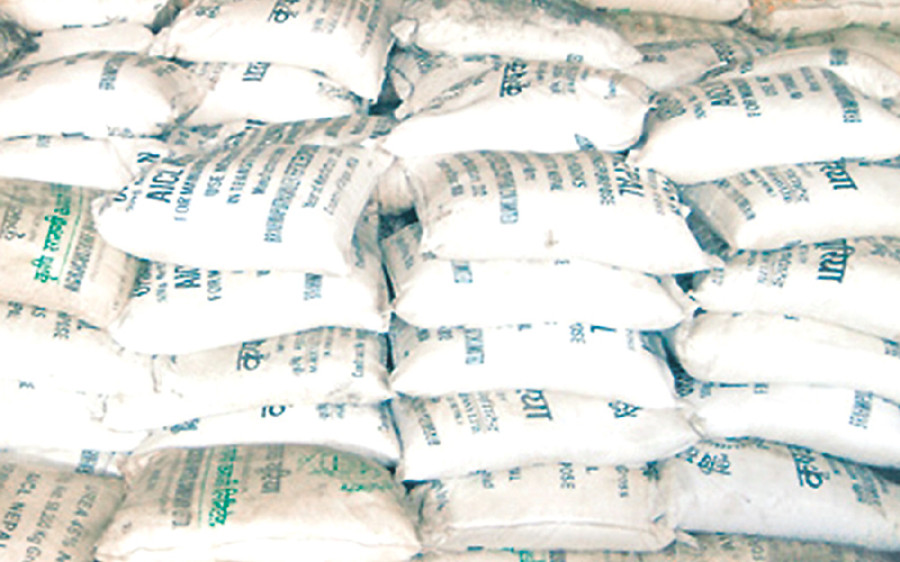Opinion
Efficient fertiliser use
Unbalanced fertiliser use, inappropriate crop varieties and delays in sowing are the most important controllable factors reducing fertiliser efficiency.
Nanu Jha
Unbalanced fertiliser use, inappropriate crop varieties and delays in sowing are the most important controllable factors reducing fertiliser efficiency. In fact, increased use of nitrogen without other nutrients can actually decrease yields. Experts have calculated the fertiliser response ratios of cereals. As a general guide, it can be assumed that one unit of balanced nutrient supply (nitrogen, phosphorus and potassium) produces about 10 units of grain. Balanced nutrient application means external application of essential plant nutrients which the soil cannot provide for the optimum or desired production level.
Soil health
Nepali farmers have not been applying fertilisers to their crops as recommended by soil scientists. Nationwide consumption trends show that urea, DAP and muriate of potash are being used at the rate of 63 percent, 32 percent and 2 percent respectively to three major crops—rice, maize and wheat. The consumption of muriate of potash is about 15 percent less that the recommended level. The government provides a 50 percent subsidy on urea, 40 percent on DAP and 20 percent on potassium. Farmers have been applying fertilisers not as per the recommended dosage but as per the level of subsidy. The concerned authorities are urged to increase the subsidy on muriate of potash so that farmers can increase the application of potassium for a bumper harvest.
Almost 75 percent of the potash and 25-30 percent of the nitrogen and phosphorus nutrients can be returned to the soil if dried stalks and leaves of field crops are mixed with it. If the dried stalks and leaves are burnt instead of being mixed with the soil, much of the nitrogen is lost. Burning dried stalks and leaves of field crops is a wasteful practice and it must be discouraged, even banned for the improvement of soil health.
Fertiliser marketing includes tasks such as tailoring product needs to the nutrient needs of specific soils and crops, proper handling and storage, understanding promotional programmes and providing technical back-up to enable farmers to make the best possible use of their investment in fertilisers. It also includes advance planning to ensure that the right type of fertilisers are in place at the right time. If the shipment arrives after the sowing season, this cannot result in efficient fertiliser use. Soil test-based fertiliser application rates are better balanced, more cost effective and more efficient resulting in higher crop productivity and profitability.
Technology bridges
Persons engaged in fertiliser promotion, market development or farm advisory services should see themselves as technology bridges through whom policies, programmes, products and proven practices travel to the end user, the farmers. Fertiliser dealers and cooperatives are a vital link in the supply chain of fertilisers. A good fertiliser dealer should be very good in knowing which fertiliser is needed when and for what crop. In addition, he should be able to make essential fertiliser calculations. He should advise farmers correctly. If a farmer plans to top dress nitrogen and urea is not in stock, he should never tell him to use single super phosphate by saying that it is, after all, a fertiliser. He should recommend the use of another fertiliser. Instead of giving a wrong answer, it is better to say, “I do not know.” He can also pass on the problem to an expert.
A bag of fertiliser, after it leaves the factory, is loaded, unloaded, dragged, stacked and carried over short distances by human porters. To make their work easier, porters often use metal hooks to pull or lift the bags. Even though the bags are marked ‘Use No Hooks’, porters still use them because they do not care how this may affect fertiliser quality. The problem can’t be solved by education alone, porters have to be provided incentives to handle the bags without hooks.
Chronic shortage
Organic materials will never replace chemical fertilisers. Organic materials have an unstable and much lower nutrient content than chemical fertilisers. Depending on their origin, organic materials can contain comparatively high levels of potentially harmful elements like lead, cadmium and arsenic. Nevertheless, organic materials and manufactured fertilisers can often be mutually complementary. Government controls on fertiliser prices and the total cost subsidy given to Agriculture Inputs Company and Salt Trading Corporation are two major reasons behind the chronic shortage of fertilisers in the country. Farmers are forced to spend days travelling or waiting in queues to get fertiliser during the height of the planting season due to the inefficiency of the state-owned corporations.
The real challenge is how to promote the efficient use of chemical fertilisers to increase production and productivity of agricultural products. The country depends entirely on imported fertilisers. Despite the high priority given to the agriculture sector, rice imports have been swelling. Nepali farmers get low prices for their food crops, so they have little incentive to use fertilisers and increase output. To overcome this problem, some countries have used a two-tier price system to maintain a differential between producer and consumer prices. This can stimulate fertiliser use, but the cost to the government may be high.
Many countries have established official procurement prices for major crops. To be effective, they have to be fixed before the planting time, and the government must be prepared to enforce price controls. The farm level price of urea is the highest in Japan and South Korea, but rice prices are also much higher in these countries. Consequently, the rice-urea price ratio is the most favourable in Japan and Korea. Fertiliser price subsidies are necessary in the introductory stage of fertiliser use. But subsidies should always be considered a temporary measure and subject to constant review to ensure that they are meeting their objectives. Since 2009, the government has been allocating a huge budget to subsidise fertilisers. So they must be used in the most efficient way for the maximum benefit of Nepal’s farmers.
- Jha is an agricultural economist and adjunct professor at Himalayan College Agricultural Sciences and Technology, Kathmandu




 10.12°C Kathmandu
10.12°C Kathmandu











